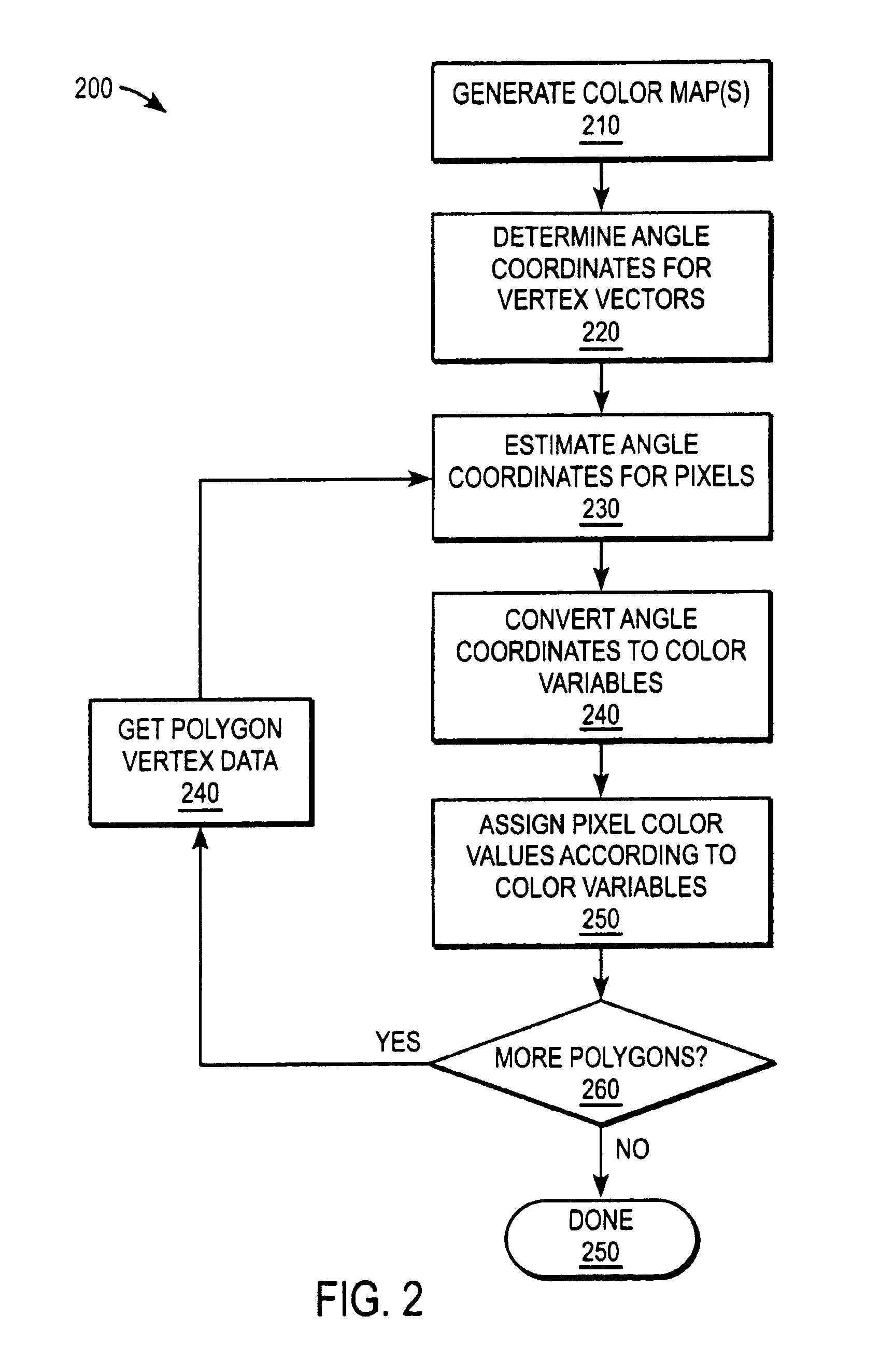Extension of fast phong shading technique for bump mapping
a bump mapping and phong shading technology, applied in the field of computer graphics, can solve the problems of affecting the quality of 3d images produced by these methods, placing a significant burden on the processing power of the computer, and significantly slowing the image generation process of rendering,
- Summary
- Abstract
- Description
- Claims
- Application Information
AI Technical Summary
Benefits of technology
Problems solved by technology
Method used
Image
Examples
Embodiment Construction
[0024]The following discussion sets forth numerous specific details to provide a thorough understanding of the invention. However, those of ordinary skill in the art, having the benefit of this disclosure, will appreciate that the invention may be practiced without these specific details. In addition, various well known methods, procedures, and components have not been described in detail in order to focus attention on the features of the present invention.
[0025]FIG. 1 shows the different vectors that are associated with a polygon P for implementing various illumination models. In the following discussion, vectors and matrices are represented by bold capital letters. P is shown as a triangle for purposes of illustration with the understanding that any type of convex, planar polygon may be used to approximate the surface of an object. Vectors N, L, V, and H are shown for an arbitrary set of surface coordinates (s, t) on P. N is a unit vector that is normal to P at (s, t). L is a unit...
PUM
 Login to View More
Login to View More Abstract
Description
Claims
Application Information
 Login to View More
Login to View More - R&D
- Intellectual Property
- Life Sciences
- Materials
- Tech Scout
- Unparalleled Data Quality
- Higher Quality Content
- 60% Fewer Hallucinations
Browse by: Latest US Patents, China's latest patents, Technical Efficacy Thesaurus, Application Domain, Technology Topic, Popular Technical Reports.
© 2025 PatSnap. All rights reserved.Legal|Privacy policy|Modern Slavery Act Transparency Statement|Sitemap|About US| Contact US: help@patsnap.com



